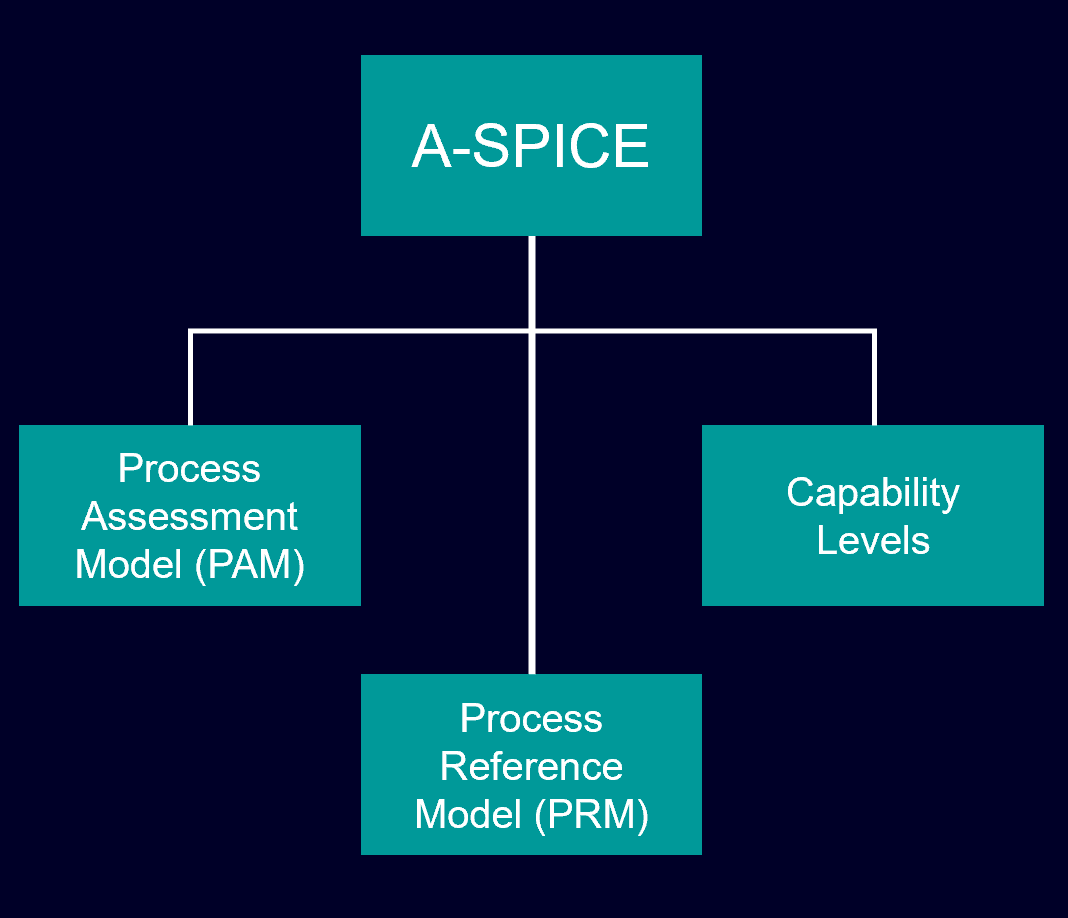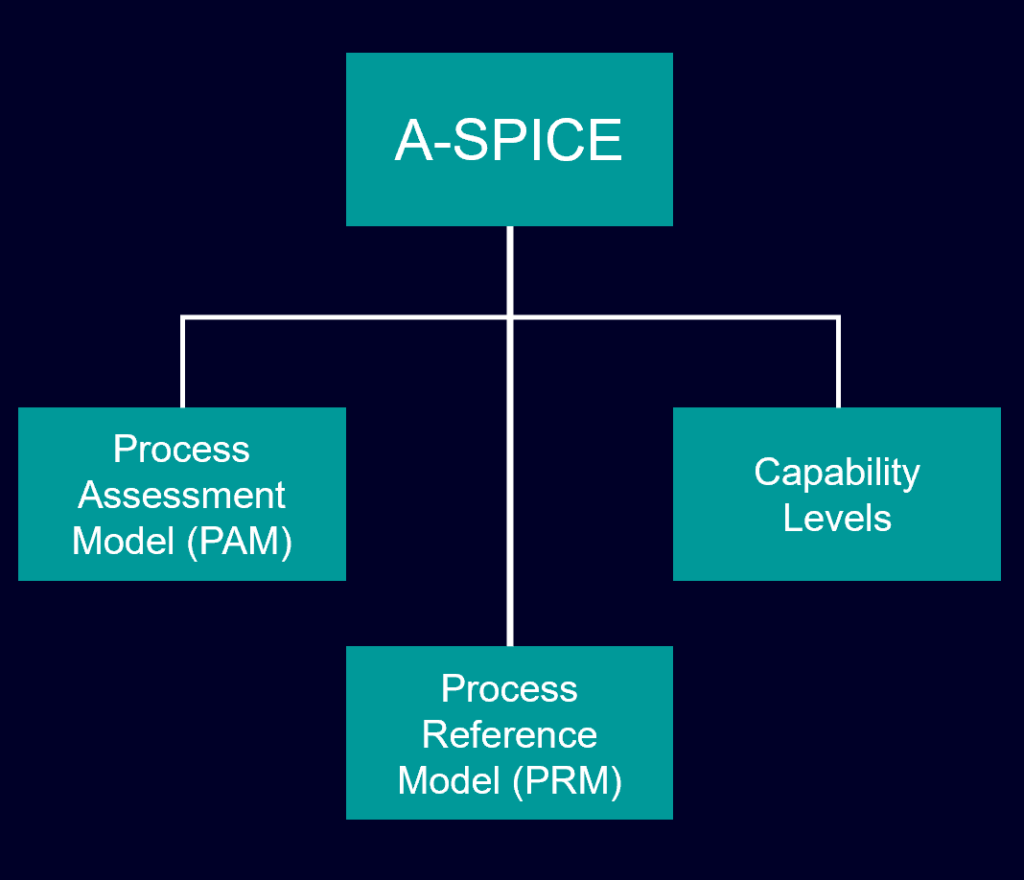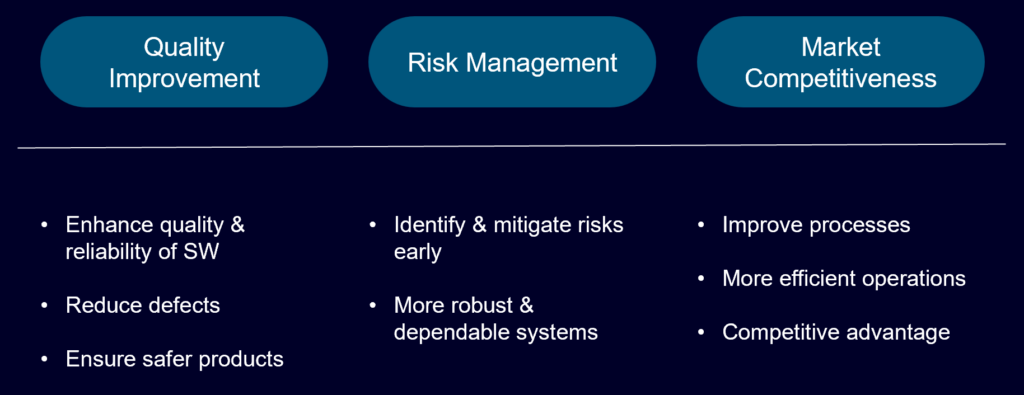Automotive-SPICE 4.0 What´s new?


Table of Contents
Overview
Automotive SPICE (A-SPICE) is a widely recognized framework specifically designed to assess and improve software development processes within the automotive industry. Developed by the Automotive Special Interest Group (SIG), A-SPICE aims to ensure that the software systems used in vehicles meet the highest standards of quality, reliability, and safety.
A-SPICE consists of 3 main entities:

The PAM (Process Assessment Model) in A-SPICE outlines a set of processes categorized into domains such as System Engineering, Software Engineering, and Supporting Processes. Each process is evaluated based on specific base practices and work products, which provide a detailed and structured approach for process improvement and assessment.
The PRM (Process Reference Model) provides a detailed view of necessary processes for automotive software and system development, aligned with the ISO/IEC 33020 standard. This model offers comprehensive descriptions and expected outcomes for each process, guiding organizations in achieving higher process maturity.
A-SPICE defines six capability levels that reflect the maturity and effectiveness of an organization’s processes:
•Level 0: Incomplete Process – The process is either not performed or fails to achieve its purpose.
•Level 1: Performed Process – The process is implemented and achieves its purpose.
•Level 2: Managed Process – The process is planned, monitored, and adjusted as needed.
•Level 3: Established Process – The process is defined, standardized, and integrated into standard business practices.
•Level 4: Predictable Process – The process operates within defined limits to achieve predictable outcomes.
•Level 5: Optimizing Process – The process is continuously improved based on a quantitative understanding of common causes of variation.
Why use Automotive-SPICE?

A-SPICE promotes a culture of continuous improvement by encouraging regular assessments and incremental enhancements of process capability levels. This ongoing improvement cycle helps organizations adapt to new challenges and technological advancements, ensuring sustained excellence in software development.
What has changed?
When looking at the PRM (Process reference model) framework, several new processes have been introduced to address the evolving demands for software & hardware development.
HWE – Hardware Engineering
The Hardware Engineering (HWE) processes provide a structured approach to developing robust and reliable hardware components, with a strong emphasis on safety and integration with software systems.
- HWE.1: Hardware Requirements Analysis
Focuses on comprehensive analysis and integration of safety-critical requirements, aligning with ISO26262 standards - HWE.2: Hardware Architectural Design
Provides in-depth guidance on creating modular and scalable hardware architectures, emphasizing integration with software systems. - HWE.3: Hardware Detailed Design and Implementation
Includes specific practices for detailed hardware design, considering manufacturing constraints and electronic component integration - HWE.4: Hardware Testing
Emphasizes rigorous validation and verification criteria, ensuring hardware components meet specified requirements and perform reliably under various conditions.
MLE – Machine Learning Engineering
MLE involves a series of steps to develop, train and deploy models that can learn from data and make predictions or decisions. These processes are essential for creating intelligent systems that can adapt and improve over time.
- MLE.1: Machine Learning Requirements Analysis
Defines and analyzes machine learning requirements, ensuring they are clear, complete and aligned with system-level requirements. - MLE.2: Machine Learning Data Management
Focuses on the collection, preparation and management of data used for training and testing machine learning models, emphasizing data quality and relevance. - MLE.3: Machine Learning Model Development
Covers the design, training and validation of machine learning models, ensuring they meet specified performance and reliability criteria. - MLE.4: Machine Learning Model Deployment and Monitoring
Deals with deploying machine learning models into production environments and continuously monitoring their performance to ensure they operate reliably and safely.
The introduction of these new processes in A-SPICE 4.0 represents a significant advancement in the framework, aligning it with modern industry standards and best practices. These enhancements, covering Agile project management, continuous quality improvement, comprehensive risk management, detailed hardware engineering, and systematic machine learning integration, ensure that automotive software and hardware development processes are robust, reliable, and safe.
While the new processes highlighted here are critical, A-SPICE 4.0 includes many other changes and improvements that further elevate the framework’s effectiveness. Detailing all of these changes would exceed the scope of this entry, but it’s clear that A-SPICE 4.0 is designed to meet the complex and evolving needs of the automotive industry. By embracing these updates, organizations can achieve higher quality outcomes and reinforce their commitment to excellence in automotive development.
Thank you
For more information contact me at denis.liwoch@siemens.com


